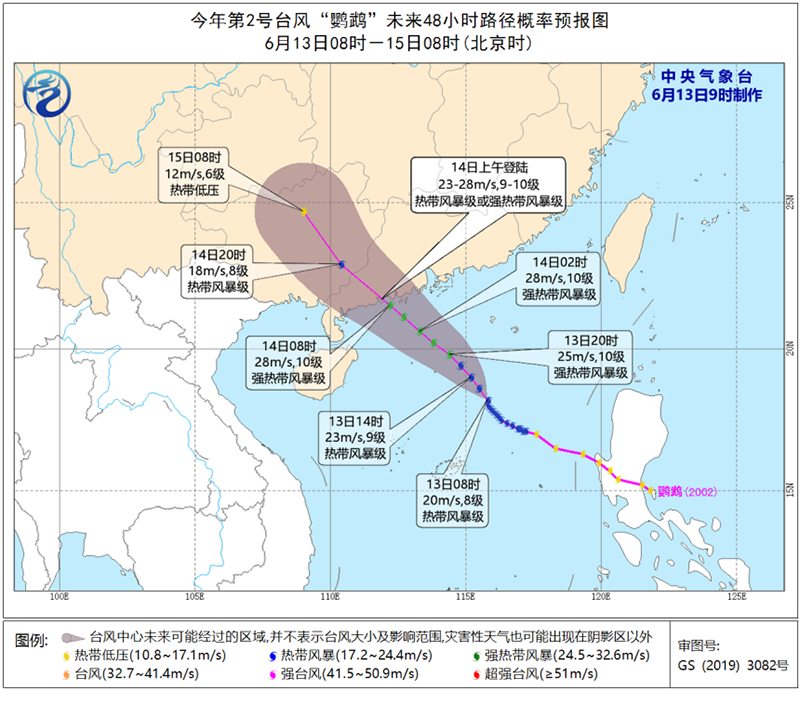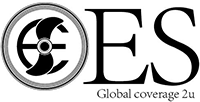note! Typhoon "Parrot" is about to land! Will affect the southeast coastal ports

Regarding the operations in related waters and passing ships, pay attention to returning to the port to avoid wind. The port should strengthen relevant facilities to prevent ships from anchoring, stranding and collision.
According to the latest typhoon forecast issued by the Central Meteorological Observatory, as of today (June 12) at 14:00, the center of tropical low pressure in the western part of Luzon, Philippines, is located southeast of Yangjiang City, Guangdong Province, China (16.5 degrees north latitude, 118.3 degrees east longitude) At 890 kilometers, the center has a maximum wind power of level 7.
It is expected that the typhoon will move northwestward at a speed of 15-20 kilometers per hour, and its intensity will gradually increase, and it will land on the coast of Shenzhen, Guangdong to Xuwen around noon on the 14th (23-28 m/s, tropical storm level or Severe tropical storm level).
is expected to have a greater impact on coastal ports in southeastern my country.
It is estimated that there will be strong winds of magnitude 6-7 on the Bass Strait, the southern waters of the Taiwan Strait, the eastern waters of the South China Sea, and the waters near Huangyan Island from 14:00 on June 12 to 14:00 on 13th. Among them, winds in parts of the central and eastern South China Sea range from 8-9, local winds are 10, and gusts can reach 11-12.
This is also the first typhoon to land in my country this year. I would like to remind you that ships planning to sail through the aforementioned sea area in the near future will do a good job of defense.
It is reported that Shenzhen Yantian International Container Terminal (YICT) is taking defensive measures based on the emergency plan. At present, the operation area of the terminal is operating normally.
Shenzhen Yantian International Container Terminal Typhoon Warning Notice
Dear all
Due to the tropical depression, Shenzhen Observatory has issued the typhoon signal “White” at 12:00 hrs, on 12 Jun, 2020.
YICT is now taking typhoon precautionary measures. Currently all terminal operations remain normal.
If there is any update on terminal services arrangement, we will issue the information through voice call at direct line (86-755) 25180000,YICT website and Wechat Official Accounts "YICT_25180000".
-------------------------------------------------- --------
Affected by the tropical depression, the Shenzhen Meteorological Observatory issued a white typhoon warning signal at 12:00 on June 12, 2020.
YICT is taking defensive measures based on the emergency plan. Currently, the operation area of the terminal is operating normally.
If there is the latest operation arrangement, we will release the message through (86-755) 2518 0000 voice telephone, the official website of Yantian International and WeChat public service number "YICT_25180000".
Attached typhoon defense guide:
01
The ship's anti-station should be based on anti-station, and the anti-station measures should be left with a margin. The crew should be familiar with the ship's performance status. According to the typhoon's path, strength and water conditions, combined with the ship's scale data, performance status, loading situation and other actual conditions, take anchoring anti-station or offshore mobile anti-station and other measures suitable for the ship. There must be a margin for anti-Taiwan measures.
02
Shipping companies should improve the anti-typhoon anti-typhoon documents or procedure documents, follow up and supervise and guide the ships affected by the typhoon, and strengthen the crew's typhoon prevention skills training.
03
The company should have an overall arrangement for ship typhoon defense. Before making recommendations to the ship for typhoon defense, the company should fully analyze the typhoon trend and intensity changes, and according to the typhoon wind and path changes, combined with the ship size, loading conditions, performance status, etc. According to the actual situation, timely adjust the anti-Taiwan deployment suggestions, and encourage the captain to express their opinions on the spot.
04
Before the typhoon season comes, the captain should organize the relevant personnel of each department to carry out a comprehensive inspection of the ship's typhoon prevention equipment and its attachments to ensure that the boiler, main engine, auxiliary engine, windlass, steering gear and other equipment are in a normal state.
05
Under the influence of the typhoon, during the port loading and unloading or anchoring, the captain should carefully receive the weather forecast, especially pay attention to receive the weather warning broadcast by the local meteorological department, and closely track the typhoon dynamics. When the typhoon affects the ship loading and unloading at the port or the ship anchored in the anchorage in the port, the loading and unloading plan shall be adjusted in time and preventive measures shall be taken.
06
The crew should overcome the paralyzing thoughts, have sufficient understanding of the huge damage caused by the typhoon, maintain continuous attention and alertness to the changes in the path and intensity of the typhoon, choose the waters for typhoon prevention reasonably, the captain should organize the crew to study and deploy typhoon tracking, and evaluate the ship typhoon prevention For possible difficulties and dangerous situations, formulate corresponding countermeasures. If necessary, the ship can be considered for sea voyage to avoid the typhoon and maneuver for typhoon range.
07
The crew should strengthen the study of company system documents and anti-Taiwan plans, and take anti-Taiwan measures in strict accordance with the requirements of the system documents and anti-Taiwan plans. Before the typhoon, the deck activities equipment and components should be reinforced and bound, and the ballast tanks should be ballasted, including the ballast tanks of the ship storm, to the maximum amount, to reduce the impact of free liquid surface and reduce the ship’s impact. The wind area increases the draught of the ship.
08
Vehicles and anchors should be prepared when anchoring and defending berths, and according to wind changes and shelter conditions of anchorages, timely measures such as throwing “one point of anchor” and loose foot chain lengths should be taken. Never hang anchor in the wind. If the anchor must be twisted, the vehicle, rudder, and anchor should be prepared for coordinated action. If necessary, move the vehicle first and then winch the anchor, or twist the anchor while moving the vehicle.
